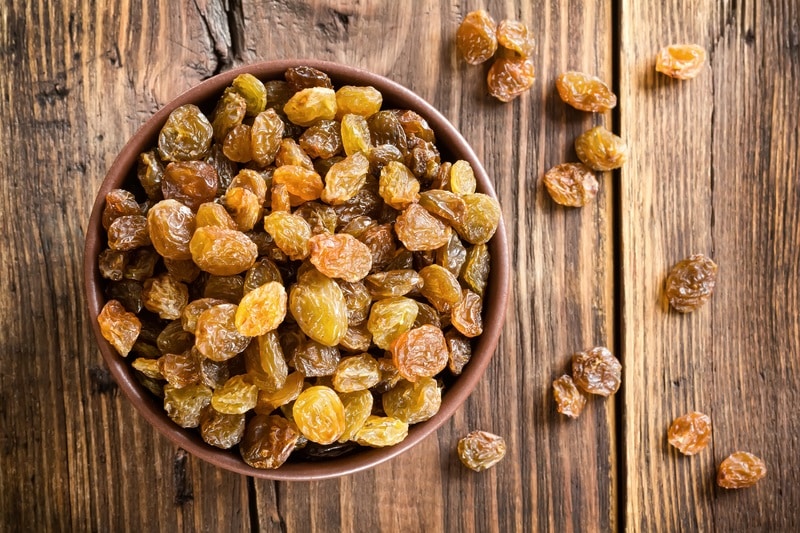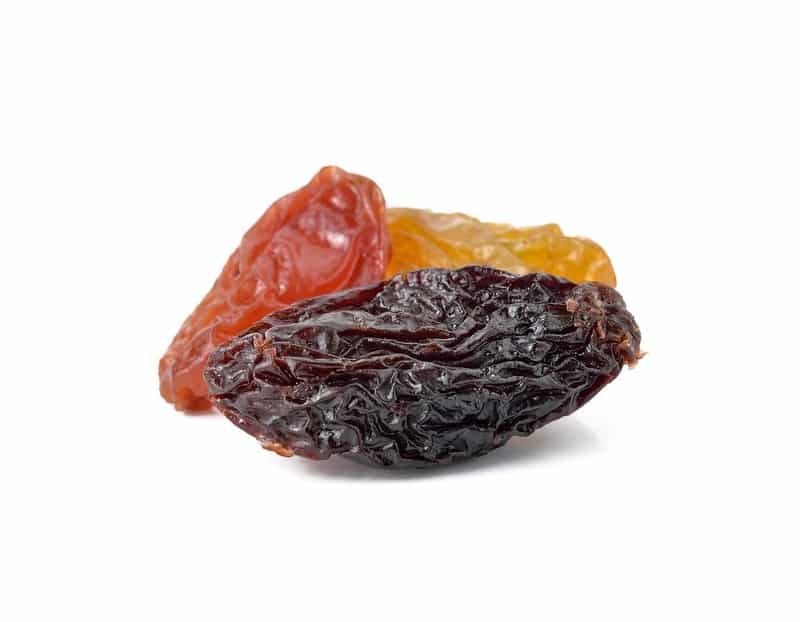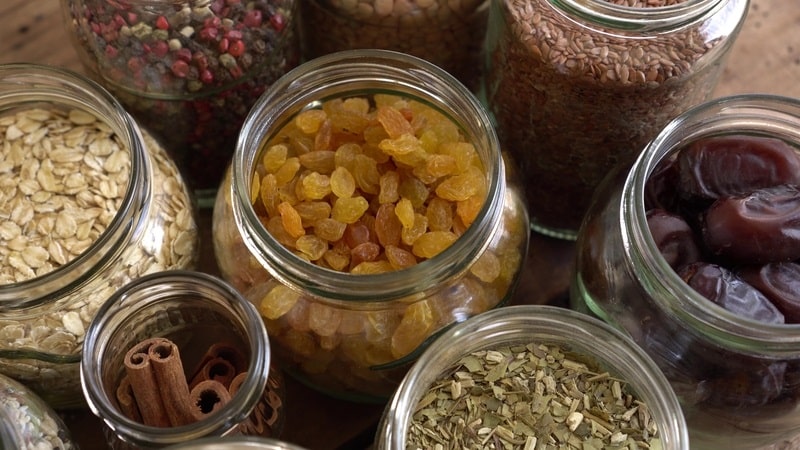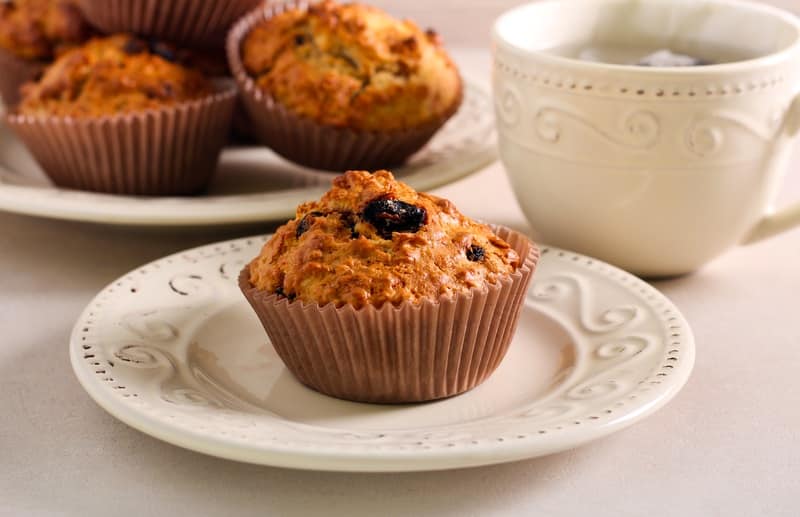
Raisins are the ultimate healthy snack for people who have a sweet tooth and are concerned about nutrition. Raisins are actually dried grapes so they have a pretty stable shelf life.
However, some people are wondering about the white spots that sometimes develop on raisins and if they are still safe to eat. So, let’s see what it is all about!
White Spots on Raisins
There are various types of raisins available in different colors. The most common are golden raisins and black raisins. White spots can sometimes be found on both raisin variants.
When fruit is dried, the manufacturers sometimes sprinkle it with powdered sugar. This enhances the shelf life, adds texture, and prevents the pieces from sticking together.
However, adding sugar like this does increase the calorie count so always try to look for raisins without added sugar.
- The spots may be sugar crystals. If the spots are sugar, your raisins are safe to eat.
- The spots may be mold. It is unusual for dried fruit to become moldy but it can happen if it is not stored correctly.
Storing Raisins Correctly
Raisins or any dried fruit need to be stored in a dry, airtight container, in a cool, dark, dry place. Any moisture will lead to mold growth.
For this purpose, you could try using the pantry but you can also opt for the dark cabinets in your kitchen. Keep the raisins away from the stove or kitchen sink. In addition, always store raisins in sealed bags or jars rather than in the packet they come in.
Shelf Life of Raisins
Raisins, unopened, have a shelf life of a year. You can store them in your pantry for at least six months if they are unopened. This shorter time ensures optimal quality but they will still be safe to eat for up to a year.
After you’ve opened them, keep them in an airtight, dry jar. For top-quality, refrigerate them for six months after opening particularly if you live in a hot, humid climate.
You need to look for the signs on raisins to see if they have gone bad. The first sign should be an off odor. Off raisins often develop a “winey”, “fermented” smell and taste. They may change color as well.
In addition, if there is organic growth on raisins or mold, the raisins have officially gone bad and are not safe for consumption. If raisins look fine, you can taste them to ensure they are safe to eat.
Sometimes older raisins dry out and become a little hard. You can fix this by soaking them in boiling water for a while to rehydrate them. After doing this, you will need to use them the same day for baking things such as muffins or fruit cake.
To Conclude
Raisins seldom go bad or moldy but they can. The white spots on your raisins are probably sugar crystals but they may be mold. If you are in doubt, throw them out and but a fresh packet to be safe.
Bonus Recipe
Here’s a recipe to help you use up your raisins so that they don’t lie around on the shelf for too long. We hope you enjoy it!
Apple and Raisin Bran Muffins
Ingredients
- ¼ cup cooking oil
- 1 egg
- 1 teaspoon vanilla essence
- 1 cup milk
- 1 apple, grated
- ¾ cup light brown sugar
- ¼ teaspoon salt
- 1 ¼ cups cake flour
- 1 cup digestive wheat bran
- ¾ cup raisins
- 1 teaspoon baking soda
- 1 teaspoon baking powder
Instructions
- Preheat the oven to 180°C.
- Prepare 12 muffin pans – either grease them or line them with muffin papers.
- Mix all wet ingredients in one bowl – the oil, eggs, vanilla, milk, and apple. Beat well.
- Mix all dry ingredients in another bowl.
- Mix everything together.
- Spoon mixture into muffin pans.
- Bake for about 15 minutes.
- Makes a dozen.



